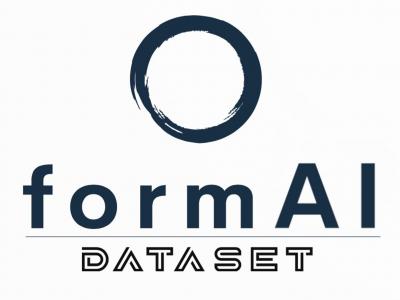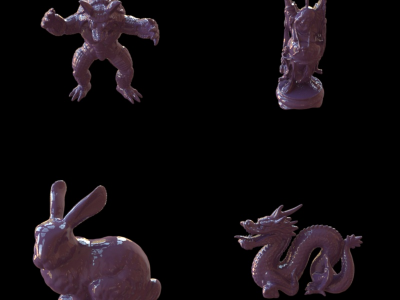Artificial Intelligence

ABSTRACT As the world increasingly becomes more interconnected, the demand for safety and security is ever-increasing, particularly for industrial networks. This has prompted numerous researchers to investigate different methodologies and techniques suitable for intrusion detection systems (IDS) requirements. Over the years, many studies have proposed various solutions in this regard including signature-based and machine-learning (ML) based systems. More recently, researchers are considering deep learning (DL) based anomaly detection approaches. Most proposed works in this research field aimed to achieve either one or a combination of high accuracy, considerably low false alarm rates (FARs), high classification specificity and detection sensitivity, achieving lightweight DL models, or other ML and DL-related performance measurement metrics. In this study, we propose a novel method to convert a raw dataset to an image dataset to magnify patterns. Based on this we devise an anomaly detection for IDS using a lightweight convolutional neural network (CNN) that classifies denial of service and distributed denial of service. The proposed methods were evaluated using a modern dataset, CSE-CIC-IDS2018, and a legacy dataset, NSL-KDD. We have also applied a combined dataset to assess the generalization of the proposed model across various datasets. Our experimental results have demonstrated that the proposed methods achieved high accuracy and considerably low FARs with high specificity and sensitivity. The resulting loss and accuracy curves have also demonstrated the excellent generalization of the proposed lightweight CNN model, effectively avoiding overfitting. This holds for both the modern and legacy datasets, including their mixed version.
- Categories:
 744 Views
744 ViewsFormAI is a novel AI-generated dataset comprising 112,000 compilable and independent C programs. All the programs in the dataset were generated by GPT-3.5-turbo using dynamic zero-shot prompting technique and comprises programs with varying levels of complexity. Some programs handle complicated tasks such as network management, table games, or encryption, while others deal with simpler tasks like string manipulation. Each program is labelled based on vulnerabilities present in the code using a formal verification method based on the Efficient SMT-based Bounded Model Checker (ESBMC).
- Categories:
 2029 Views
2029 Views
Most of the current smoke detection techniques are developed using CCTV images. To identify the wildfire early, it can be useful to deploy satellite imagery and develop models that can recognize smoke in forest areas. However, very few labelled satellite image datasets are available to build the wildfire smoke detection model. In order to find a solution to this problem, a dataset consisting 23, 644 satellite images was gathered. The dataset is divided into four categories: smoke, smoke with fog, non-smoke, and non-smoke with fog.
- Categories:
 129 Views
129 Views
We introduce a high-performance computer vision based Intraveneous (IV) infusion speed measurement system as a camera application on an iPhone or Android phone. Our system uses You Only Look Once version 5 (YOLOv5) as it was designed for real-time object detection, making it substantially faster than two-stage algorithms such as R-CNN. In addition, YOLOv5 offers greater precision than its predecessors, making it more competitive with other object detection methods.
- Categories:
 68 Views
68 ViewsProblems related to ventral hernia are very common, and evaluating them using computational methods can assist in selecting the most appropriate treatment. This study collected data from over 3500 patients from different European countries observed during last 11 years (2012-2022), which were collected by specialists in hernia surgery. The majority of patients underwent standard surgical procedures, with a growing trend towards robotic surgery. This paper focuses on statistically evaluating the treatment methods in relation to patient age, body mass index (BMI), and the type of repair.
- Categories:
 254 Views
254 ViewsThis dataset focuses on cooperative spectrum sensing in a cognitive radio network, where multiple secondary users collaborate to detect the presence of a primary user. We introduce multiple cooperative spectrum sensing schemes based on a tree deep neural network architecture, incorporating a one-dimensional convolutional neural network and a long short-term memory network. The primary objective of these schemes is to effectively learn the activity pattern of the primary user.
- Categories:
 1425 Views
1425 Views
Text classification systems have become increasingly important in recent years due to the explosion of online documents and the need to sort them for specific services. One of the most critical issues in text classification is the limited availability and diversity of datasets, which can lead to overfitting and poor generalization. In this context, we present a new dataset named Global News 60K (GN60K), which consists of 60,000 news articles from different sources from different parts of the world, covering 10 topics.
- Categories:
 287 Views
287 ViewsIn the current field of multi-view polarization 3D reconstruction, existing datasets primarily fall into two categories: real-world dataset and synthetic dataset. Real-world datasets provide accurate acquisition of illumination from real-world environments, but requires complex setups and specialized equipment such as polarization cameras. Furthermore, specific environmental conditions, such as special lighting conditions or reflective properties, may be difficult to replicate precisely in reality.
- Categories:
 383 Views
383 Views— Medical image segmentation is a crucial aspect of medical image processing, and has been widely used in the detection and clinical diagnosis for brain, lung, liver, heart and other diseases. In this paper, we propose a novel multimodal mutual attention network, called MMAUNet, for medical image segmentation. MMA-UNet is divided into two parts. The first part obtains more highdimensional features by skip connection and improved network structure.
- Categories:
 298 Views
298 Views



